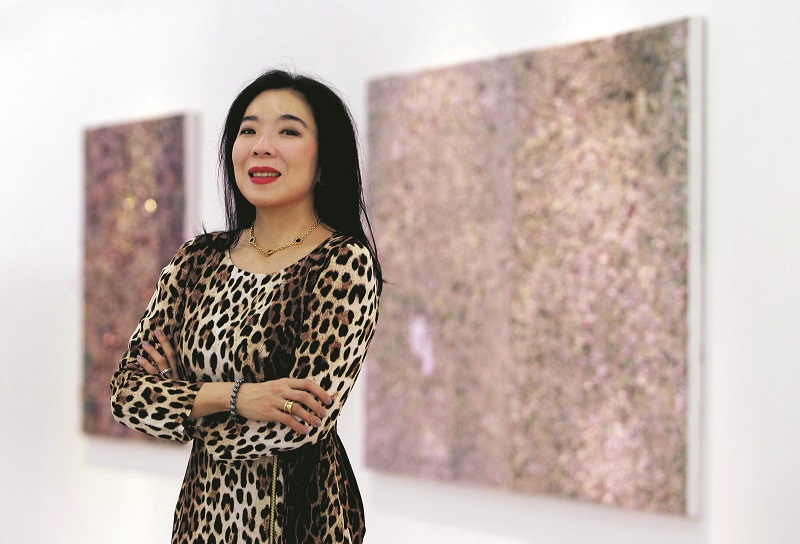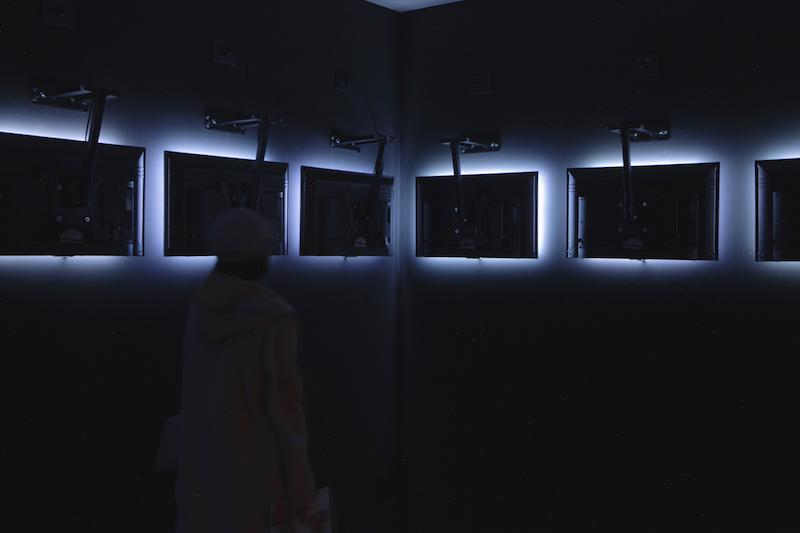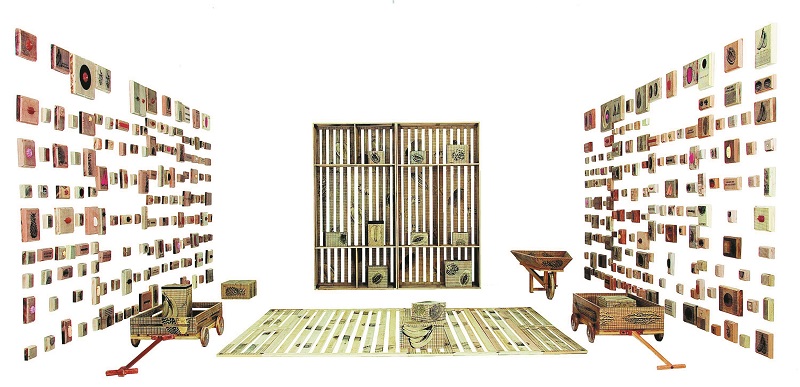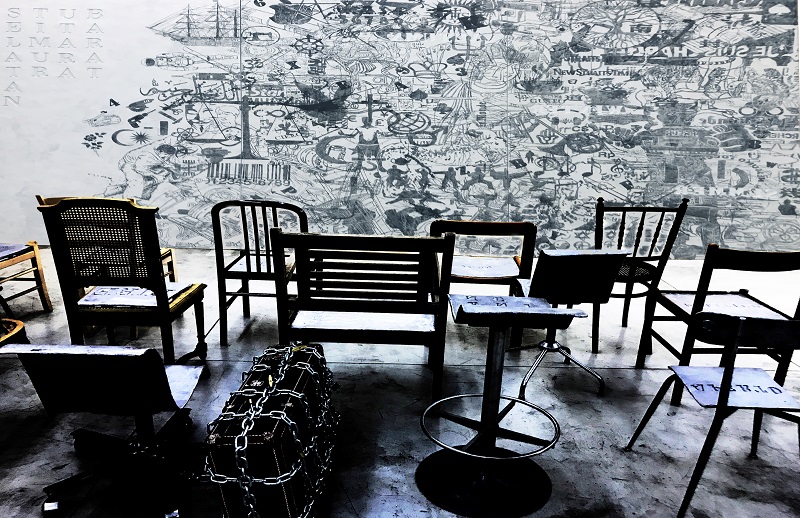
Yesterday in a Padded Room by Anurendra Jegadeva (Photo: Wei-Ling Gallery)
The first ever Malaysian pavilion was officially opened at the 58th International Art Exhibition of La Biennale di Venezia last weekend. Proudly taking up residence in the Palazzo Malipiero on the Grand Canal, just across from the famed Palazzo Grassi contemporary art centre, the pavilion is set inside one of Malipiero palace’s historic apartments. In it, an exhibition showcases four established Malaysian artists — Anurendra Jegadeva, Ivan Lam, H H Lim and Zulkifli Yusoff.
Officially commissioned by the Ministry of Tourism, Arts and Culture of Malaysia and the director-general of Balai Seni Negara (National Art Gallery of Malaysia), Professor Datuk Mohamed Najib Dawa, the thrilling backstory of how Malaysia arrived at the Venice Biennale, in fact, started with a letter.
Gallery owner Lim Wei-Ling arrived at her Gardens Mall space a few weeks ago in a flurry, rattling off a few things to follow up on to her gallery associate, Noel Tan, before turning her full attention to this writer. It was an unusual sight, to see the typically composed Lim in a harried mood, though she later said that the worst had passed and everything was in place.

It turns out Options caught a brief moment of what was an incredibly fast-paced few months for the tiny team that was responsible for the inaugural Malaysian pavilion at what is arguably the world’s biggest art event, also known as the “Art Olympics”. In between overseeing the shipping of artworks to Italy, Lim tells us the story of how it all happened.
“It wasn’t so much about the gallery, but more [about] me as an individual,” she talks of the desire to do something to get the ball rolling. “I think May 9 last year changed the perception for many Malaysians, in general, that you know, there is something each of us can contribute to the country in our own way. It was inspiring and empowering — I don’t want to sound political, but there was a feeling of pride and of Malaysians coming together that was pervasive.”
Thinking about what she could contribute led to a spur-of-the-moment decision to write to Prime Minister Tun Dr Mahathir Mohamad in the middle of last year. “I wrote it here, with the girls (her team), printed it out and sent it to the PM’s office by snail mail,” Lim recounts. In the letter, she expressed a desire to help create a national pavilion at the Biennale.
The reply came three to four months later in December, and while she was shocked, there was no time to dwell on it. “The letter was only a passport to get started, I needed to get approval from the ministry, get funding, secure a venue and renovate the space … and everything sort of dovetailed at the same time — without one, you can’t move forward with another.”

Although she did not have a lot time to work with, Lim is grateful for the support she received, particularly from the sponsors CREADOR Foundation, BRDB Developments and Seeing Eye Films, with additional support by Big Tree and Allianz. The sponsors will also help bring the works back to Malaysia to be showcased after the Biennale.
Meanwhile, visitors in Venice can expect four different rooms at the Malaysia Pavilion, one for each of the four Malaysian artists’ individual installations — comprising existing and new works. Curated by Lim and associate curator, Gowri Balasegaram, who put together the overall ideology for the national pavilion, titled “Holding Up A Mirror”, to this edition’s theme of the Biennale, which is set by director Ralph Rugoff, called May You Live In Interesting Times.
“A lot of pavilions show a solo artist, with the pavilion usually named after the project exhibited. But because it is our first, we wanted to bring together a grouping — to show a cross section of artists and offer a discourse around the concept of identity within the larger context of society at a time of significant political, social and economic changes,” says Lim.
Observing that Malaysians do not acknowledge that sense of community, or pay much attention to how we are countrymen or citizens of the world, Lim says our national identity is undeniably unique; one cynics may call a mirage, but our day-to-day lives reveal intertwined cultures and multiple histories.
Holding Up A Mirror examines this concept of national identity through the subjectivity of its four artists — from a sociopolitical viewpoint and the early days of nation building with Zulkifli Yusoff’s Kebun Pak Awang (2010) installation of wooden blocks, to Anurendra Jegadeva’s Yesterday in a Padded Room (2015) that features 182 cushion portraits lining the walls. They are a satire of our image-obsessed world, which also creates an excessive regard for significance that, ultimately, strips any meaning from it.

H H Lim’s two works are Timeframes: Four Seasons (2019) — a triptych — and Comment Sense, an installation comprising Sitting Sculptures (various years) and four short films from past years. Collectively, they stem from personal explorations of meaning. Drawing from the panoramic landscape of the artist’s past and present, they reference both his upbringing in Malaysia and the decades he spent abroad in the West.
Lastly, Ivan Lam presents One Inch (2019), an installation that sees a dark room occupied with television sets playing archival post-independence Malaysian movies, such as P Ramlee films. However, visitors can only hear the sounds and the flashing of lights as each TV faces the wall, with a gap of one inch. The overall effect is one of discomfort and garbled white noise, which evokes a desire to step away to regain clarity.
Taking a phenomenological look at identity and the self, Lam offers a sensorial reflection on homogeneity, individuality, and being in the realm of “other”, where neither of the above are reality.
Those who are familiar with the four artists know that they are either closely associated with or have been represented by Wei-Ling Gallery before. Lim nods in acknowledgment, fully aware of how it comes across. But she says matter-of-factly, “It has to start somewhere. And with time being of the essence, I needed to make sure the artists were ones that I knew would deliver. You can say what you want about them, but they are artists who I know will make the country proud, who have statements to make. I am not saying it is an exhaustive list as there are others who would also represent Malaysia well — but this is about getting our foot in the door more than anything else.”

She responds in similar fashion to the more critical feedback about the announcement of the Malaysia Pavilion a month ago — criticism included prioritising the commissioner and curator’s profiles over the profile of the artists. Lim says briefly that three of the four artists were not present during the presentation, being overseas, hence the lack of focus on them at the time.
At the end of the day, she accepts that doing something new entails dealing with criticism and different points of view. “To make something as big as this a reality was challenging. The larger picture is putting Malaysian artists on an international platform, the most prominent one at that,” she pauses, “More than anything else, this pavilion is for the next generation. Young artists have come up to me and said they have been motivated, and hope that one day they too can be on that platform.
“As for me, what I will say is that it is not about self-glorification or an egotistical play of pride but, rather, this was an act driven by nationalistic pride,” says Lim, quipping that it would have been far easier to go to an art fair to sell artworks rather than have sleepless nights over this.
But she says more earnestly, “You can never please everybody, but this is the way I look at it — clichéd as it sounds — if you are afraid of criticism, say nothing, do nothing, be nothing. This is why I have always sort of walked my own path single-mindedly. Always try — the worst answer you can get is a ‘no’. So just ask.”
The 58th International Art Exhibition of La Biennale di Venezia runs until Nov 24, 2019. The Pavilion of Malaysia is located at Palazzo Malipiero – 3198 2nd Floor, Campo San Samuele 3198, 30121 Venice, Italy. Admission hours for the Pavilion of Malaysia are Tue-Sun, 10am-6pm.
This article first appeared on May 13, 2019 in The Edge Malaysia.


